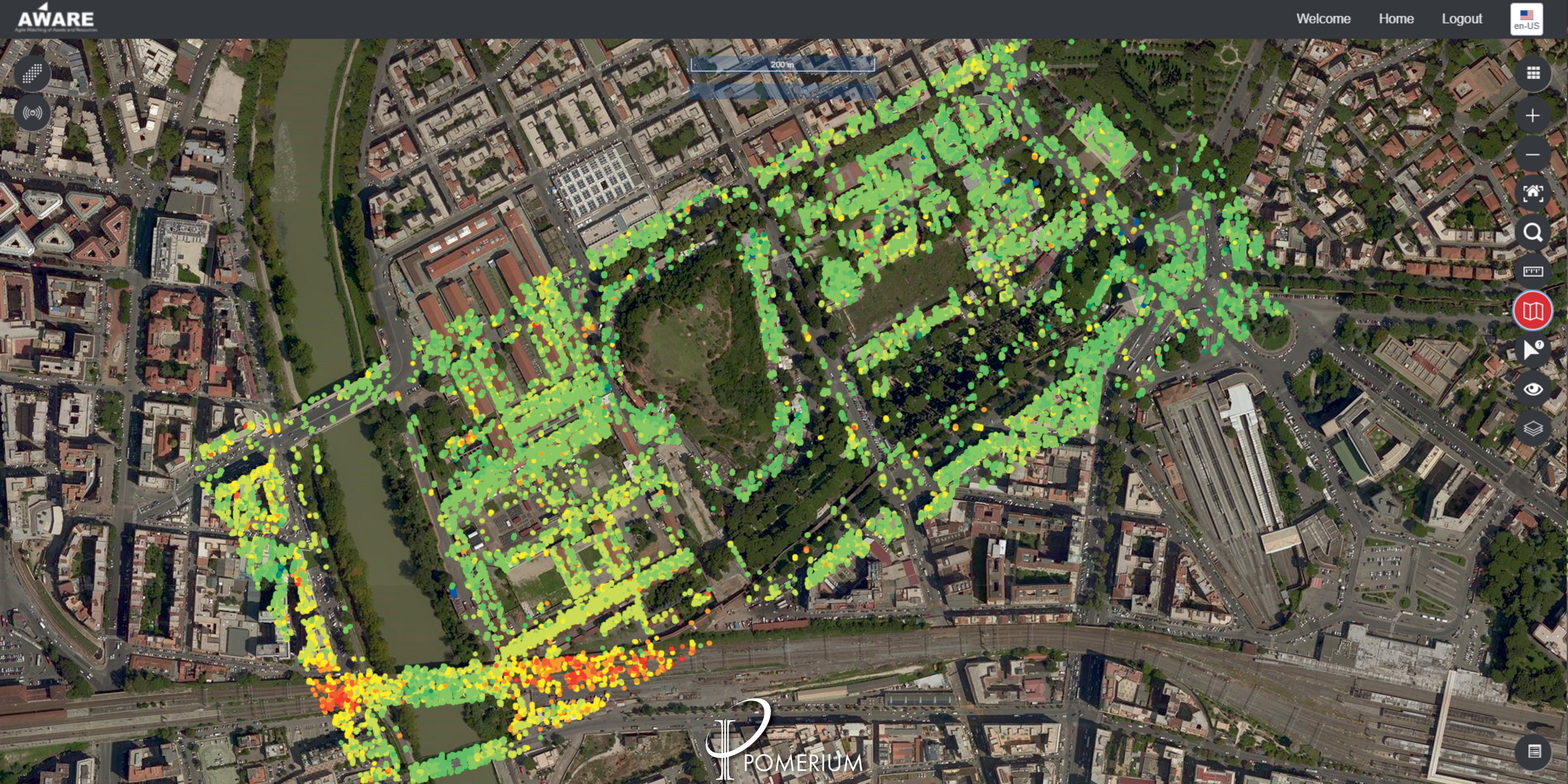The project, co-financed by ESA and ASI as part of the joint initiative Space for L'ART (L'Aquila, Rome, Turin) of the ARTES BASS program, has been presented at a press conference held today at the Ministry of Culture in the presence of the undersecretary Lucia Borgonzoni.
Pomerium envisages the creation of an advanced monitoring system using integrated methodologies and technologies, including a “Digital Twin” approach, to study and monitor certain areas of the historic centre of Rome within the area encircled by the Aurelian Walls. Areas identified in particular are the Palatine Hill and the Colosseum, the Pyramid of Cestius and Porta San Paolo, the urban course of the Tiber, the Aventine Hill, and the Porto Fluviale.

Analysis of the stability of the area of the Pyramid of Cestius and of the Aurelian Walls and of the area around the Tiber carried out with the DIFSAR methodology using data from the COSMO-SkyMed radar constellation, owned by the Italian Space Agency (ASI) and the Italian Ministry of Defense, collected in the period 2010-2020.
Using data from satellites, drones and IoT (Internet of Things) sensors placed on-site and connected through the 5G network, Pomerium will enable digital models to be built of the areas involved, identifying any phenomena taking place and predicting their evolution over time. In particular the system will be able to provide an assessment of the stability of the soil and the built environment, the impact of illegal activities (like the appearance of unauthorised refuse tips), attack by invasive vegetation, and the presence and concentration of air pollutants and their impact on the exposed surfaces of buildings, particularly historic ones. Pomerium will thus be able to provide useful information and data for maintenance planning and land management.
Within the Pomerium project e-GEOS is coordinating a group of SMEs that are active in the field of geoinformation - such as ADPM drones, ARAKNE, DBW Communications, Emersum - and research centres such as CISTeC of the Sapienza University of Rome.
The heart of the project, which is expected to be completed in March 2022, is e-GEOS’s AWARE digital mapping platform, which will guarantee the collection of content and its use by the players involved.
“Pomerium is an example of innovation applied to cultural assets and is particularly useful for all institutional bodies - such as the Ministry of Culture, the Soprintendenza Speciale di Roma, the Parco Archeologico del Colosseo, associates of the MIC, and the Sovrintendenza Capitolina - working to protect the cultural heritage in a complex environment like that of the historic centre of Rome. It's a modular and scalable project that can be used in Italy, Europe and throughout the world, wherever there is the need to safeguard and protect the environmental and cultural heritage”.
Bruno Versini, Chief Operating Officer of e-GEOS.
Earth Observation and the more rapid transformation of data into useful information - through advanced Artificial Intelligence techniques and high-performance computing - for an ever-greener and more digital Europe, is one of the pivotal aims of ESA Agenda 2025. Moreover, the use of innovative technologies for the benefit of culture and tourism is one of the priorities identified by the Italian Government for the country’s relaunch.
The development of Pomerium provides further confirmation of the capabilities of Leonardo which, together with Telespazio and e-GEOS, also offers innovative, sustainable, and digital solutions for monitoring infrastructure and cultural assets to protect the environment and the arts.
This area of activity also includes the recent announcement of an experimental project at Castel Fusano, projects on behalf of the Parco Archeologico di Pompei and the Parco Archeologico del Colosseo, and the company’s participation in the European HERACLES project (HEritage Resilience Against CLimate Events on Site) studying eco-innovative solutions to increase the resilience of cultural heritage assets against damage caused by climate change.
Pomerium is also fully in-line with the Be Tomorrow - Leonardo 2030 strategic plan, which identifies collaboration with the public sector and other industries as a primary tool for offering the best technological and know-how capabilities and for effectively responding to the needs of governments, regions, citizens and communities in terms of progress, security and sustainability.

